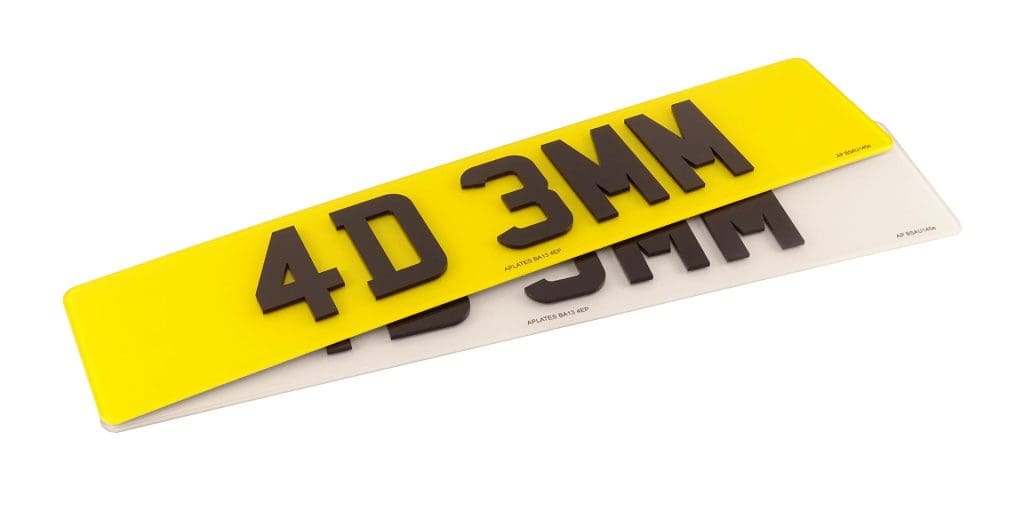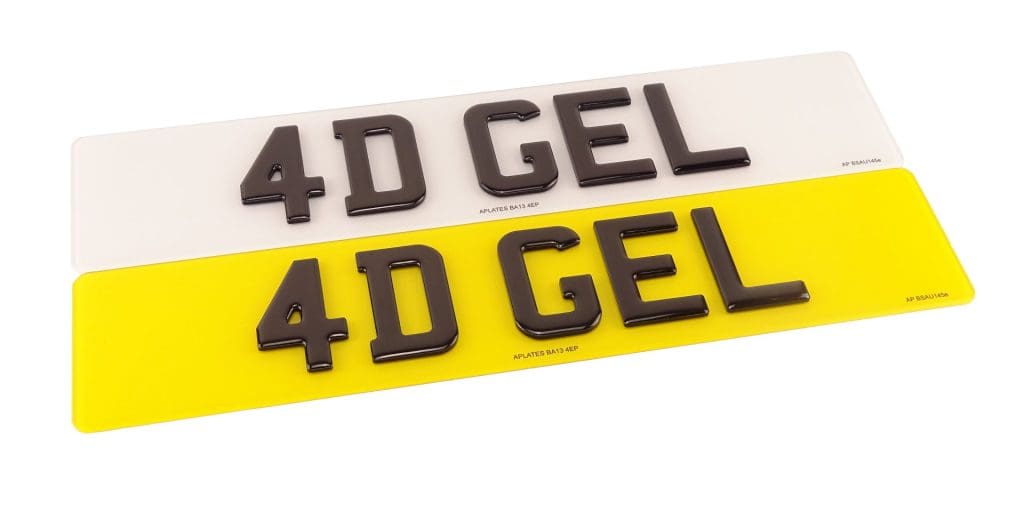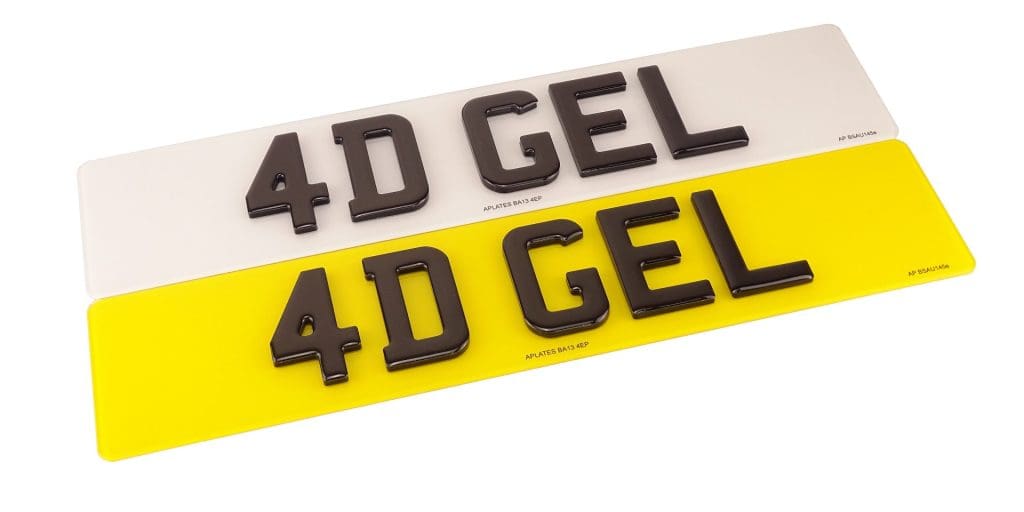3D vs 4D – How Are They Different?

With various plate styles now available on the market, we are often asked about the differences between them all.
The most common question of all concerns the difference between 3D and 4D plates, with confusion surrounding the apparent discovery of the ‘fourth dimension’.
We can confirm we haven’t made any scientific breakthroughs. We still operate in the same way, continuing to use the all familiar dimensions: height, width and depth.
However, the term ‘4D’ is very well known across the automotive world, and it has become an industry-standard name.
Therefore, we’re here to illustrate how the name came to be, what it refers to in its design, and the way it differs from 3D.
What Are 3D Plates?
3D characters are made from a gel polyurethane resin.
They are dome shaped, which provides a more rounded look.
Furthermore, the gel offers a gloss-inspired aesthetic which shines brightly in the sun.

What Are 4D Plates?
On the other hand, 4D characters are made from acrylic.
The material is professionally cut with a laser, allowing for an extremely accurate finish.
This gives a more solid look, creating a bolder style due to its greater character depth (often 3mm or 5mm).

What Are The Differences Between 3D and 4D Plates?

Technically, both plate styles are three-dimensional.
Both 3D and 4D characters are raised off the plate, albeit to different depths.
From base to peak, 3D characters are between 1.7mm – 2mm tall. However, as the edges are curved, there isn’t a consistent height the whole way across the character, hence the slight variation.
This differs from 4D characters, as they are raised to the set measurement the whole way across (in our case, 3mm or 5mm). This permits the more solid, rigid style.
With both sets of characters raised off the plate, the use of ‘3D’ isn’t sufficient when differentiating between the two.
As the gel resin characters came first, they naturally took the 3D label.
Therefore, when the raised acrylic characters were introduced to the market, number plate manufacturers had to look for another name.
This led to the emergence of ‘4D’, the latest standard across the plate industry.
So, What Are 4D Gel Plates Then?
You may have seen 4D Gel plates for sale, again in 3mm and 5mm variations.
This is a relatively new style, and they have proven to be extremely popular among the automotive community.
To put it simply, 4D Gel plates are acrylic 4D characters topped with 3D gel resin.
So, it’s a combination of 3D Gel and 4D.
4D Gel 3mm
The 3mm variation refers to 4D 3mm characters, with the standard 3D Gel characters on top.

4D Gel 5mm
Likewise, the 5mm variation refers to 4D 5mm characters, with the standard 3D Gel characters on top.

Conclusion – 3D vs 4D
As previously stated, both 3D plates and 4D plates are three-dimensional.
Therefore, whilst the ‘4’ in ‘4D’ may suggest an extra dimension, this is obviously not the case.
In the number plate industry, 3D refers to domed gel resin characters, whereas 4D refers to solid acrylic characters.
3D characters are glossy in appearance and rounded in shape.
4D characters, on the other hand, give a more solid look and a bolder style. They are more obviously raised off the plate.